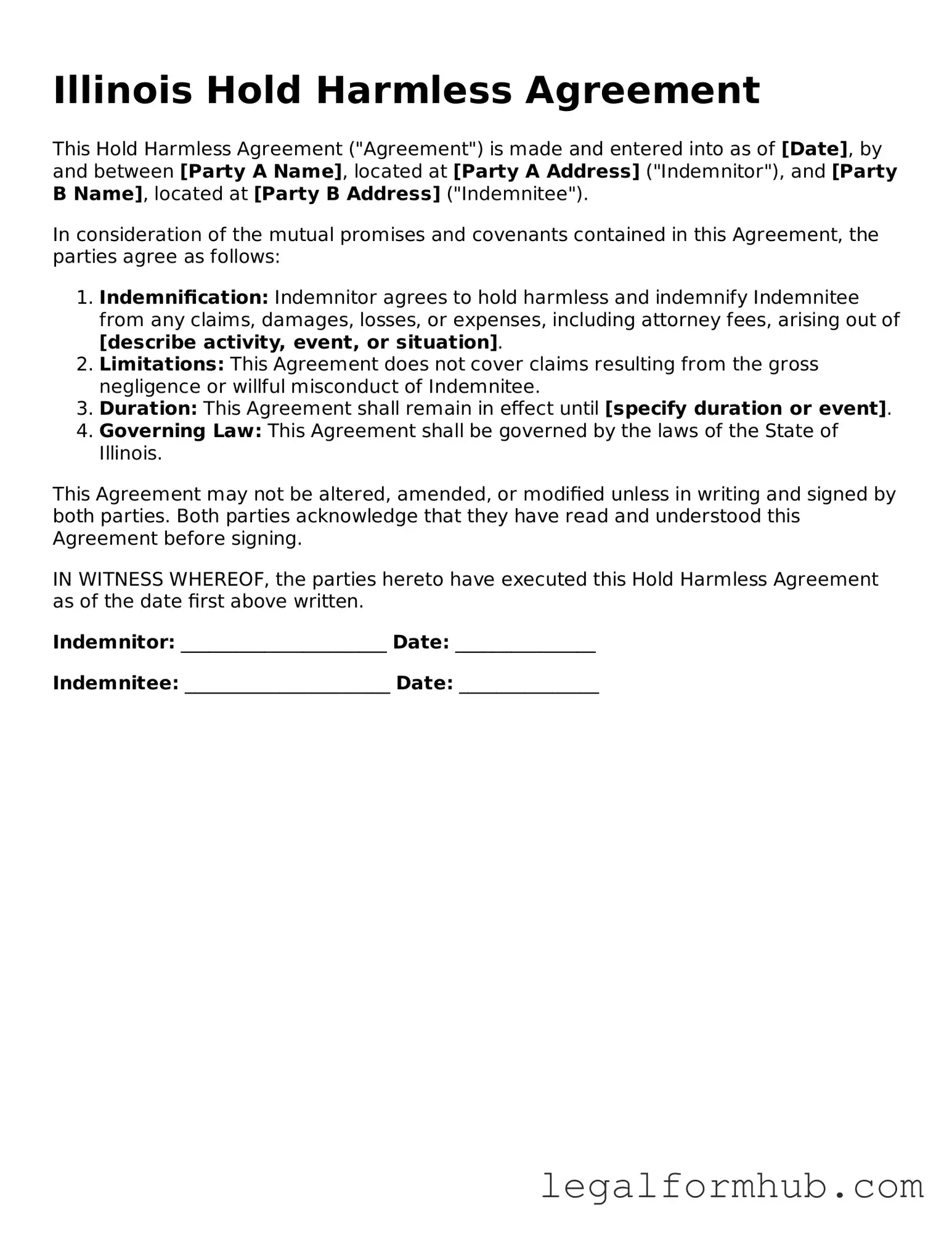The Indemnity Agreement is similar to the Hold Harmless Agreement in that both documents are designed to protect one party from liability. In an Indemnity Agreement, one party agrees to compensate another for any losses or damages that may occur. This is often used in business transactions where one party may be at risk due to the actions of another. Like the Hold Harmless Agreement, it outlines the responsibilities of each party and specifies the conditions under which indemnification will occur.
The Waiver of Liability is another document that shares similarities with the Hold Harmless Agreement. This waiver is often used in situations where individuals participate in activities that could pose risks, such as sports or recreational events. By signing a Waiver of Liability, participants agree not to hold the organization responsible for any injuries or damages that may arise. Both documents aim to limit legal liability, but the Waiver of Liability focuses more on the individual's acceptance of risk.
A Release of Liability is closely related to the Hold Harmless Agreement. This document is typically used when one party releases another from any future claims or lawsuits. In a Release of Liability, the individual acknowledges the risks involved and agrees not to pursue legal action for any injuries or damages that occur. Both documents serve to protect parties from potential legal claims, but a Release of Liability often involves a one-time event rather than ongoing responsibilities.
The Liability Insurance Policy is another important document that complements the Hold Harmless Agreement. While the Hold Harmless Agreement outlines the responsibilities of the parties involved, a Liability Insurance Policy provides financial protection in case of a claim. This insurance covers legal fees and damages awarded to the injured party. Together, these documents work to minimize risk and ensure that parties are protected from unexpected liabilities.
The Service Agreement is similar in that it often includes indemnification clauses. This document outlines the terms of service between two parties and may specify who is responsible for damages that occur during the service. Like the Hold Harmless Agreement, it aims to clarify responsibilities and protect parties from potential disputes arising from the service provided.
The Construction Contract often includes provisions that resemble those found in a Hold Harmless Agreement. In construction projects, contractors and subcontractors may agree to hold each other harmless for certain liabilities that arise during the project. This ensures that if one party faces a claim related to the project, the other party will cover the costs associated with that claim, similar to the protections offered in a Hold Harmless Agreement.
The Rental Agreement also shares characteristics with the Hold Harmless Agreement. In rental situations, landlords often include clauses that protect them from liability for injuries that occur on their property. Tenants may agree to hold the landlord harmless for certain incidents. This creates a clear understanding of responsibilities and helps mitigate potential legal issues between landlords and tenants.
The Employment Verification form is a document used by employers to confirm an employee's work history and eligibility for employment. This form plays a critical role in safeguarding both the interests of employers and the rights of employees. Understanding its importance can ensure compliance and smooth operational processes; click the button below to start filling out the form, or you can directly access it through this link: Fill PDF Forms.
Lastly, the Partnership Agreement can contain provisions akin to those found in a Hold Harmless Agreement. Partners in a business may agree to indemnify each other for certain actions taken in the course of business. This document outlines the roles and responsibilities of each partner while providing a framework for how liabilities will be managed. By including these provisions, partners can protect themselves from each other's actions, similar to the protections offered in a Hold Harmless Agreement.
